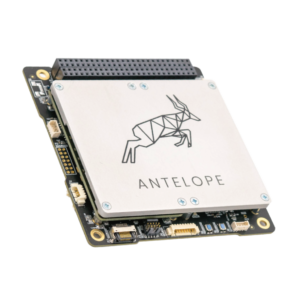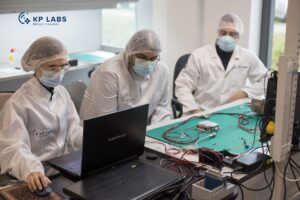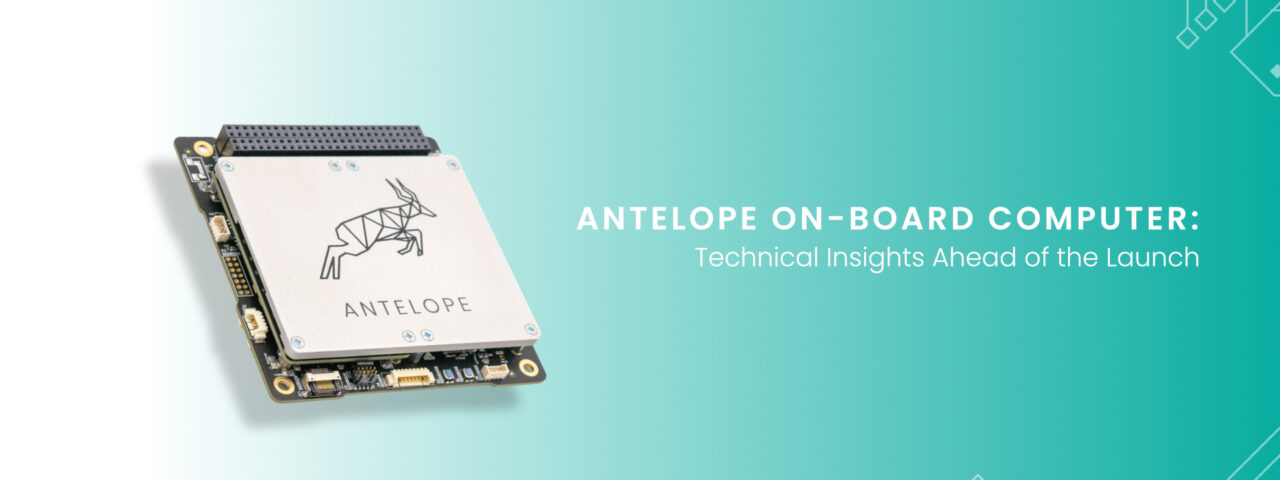Scheduled for a November launch aboard D-Orbit’s OTV – ION Satellite Carrier, the Antelope On-Board Computer (OBC), integrated with its Data Processing Unit (DPU), represents a noteworthy step in on-board satellite data processing. This deployment will mark the inaugural space mission for Antelope.
Primary Functions of the Antelope
- Subsystem Monitoring: The Antelope is a guardian of the satellite’s on-board components, ensuring their steady performance and upholding its operational efficacy.
- Anomaly Detection: The system has been programmed with algorithms to detect satellite anomalies, such as latchups and other radiation-related effects.
- FDIR Application: The embedded Fault Detection, Isolation, and Recovery (FDIR) mechanism allows for proactive disruption management.

Antelope on-board data computer
Technical Specifications of the Antelope System
- OBC Module: The core of Antelope is the Hercules RM57-based On-Board Computer. Following the PC-104 form factor, it is fortified with 8 MiB of MRAM and 4 GiB of NAND Flash memory, ensuring robust performance and data integrity.
- DPU Module: The Data Processing Unit is a formidable force powered by the Zynq Ultrascale+ MPSoC. It comes with 8 GiB of DDR4 and 8 GiB of NAND Flash memory, enabling Antelope to process complex data tasks on-board.
In terms of data processing, Antelope’s FPGA system, equipped with a processing power of 160 GOPS, excels in executing complex on-board data tasks, finding its niche in areas like Earth Observation (EO) and telecommunications.
The system’s resilience against space radiation is another significant feature of the Antelope. This is achieved through meticulously designed protective strategies. In addition, integrating machine learning algorithms offers a secondary defense line. By analyzing live telemetric data, these algorithms can pre-empt potential challenges to the mission.
Integration and Validation

Antelope OBC underwent comprehensive testing at D-Orbit’s facilities. Integration with D-Orbit’s ION Satellite Carrier, an Orbital Transfer Vehicle, was a significant phase in the pre-launch preparations. This integration ensured the Antelope would operate as intended in its space environment. After the integration, the ION with the Antelope inside passed vibration and TVAC extensive testing that proved its endurance in future space conditions. Software evaluation, carried out under simulated conditions, was essential to gauge the system’s efficacy and ensure it met the space deployment requirements.
The collaboration with D-Orbit was instrumental for KP Labs, leveraging their space logistics and orbital transportation expertise.
Launch Readiness
As the countdown to the launch narrows, KP Labs is intently focused on refining its orbit operations strategy, with a particular emphasis on anomaly detection scenarios. This comprehensive approach ensures that the Antelope, true to its namesake, remains agile and alert in its orbital environment.
